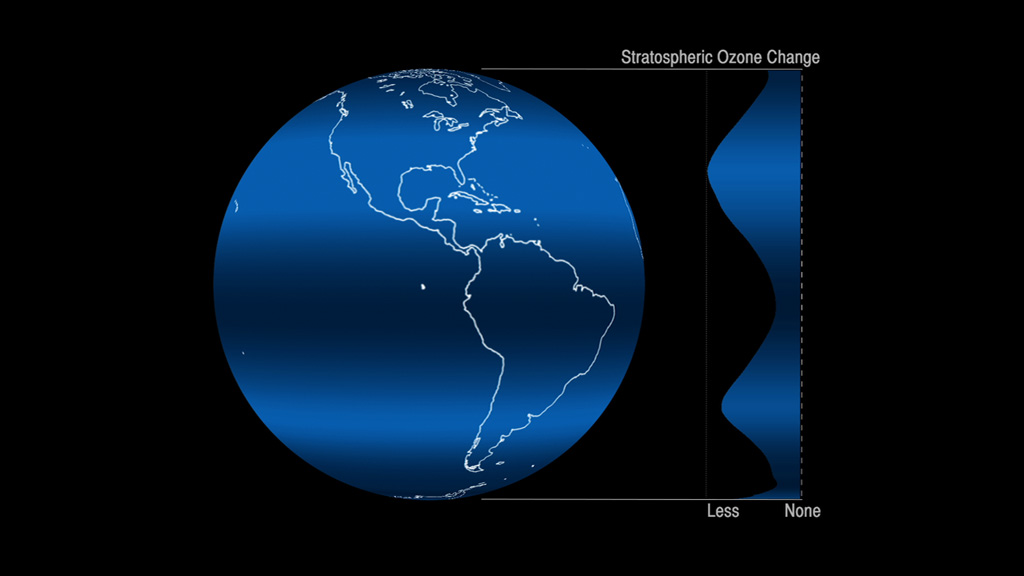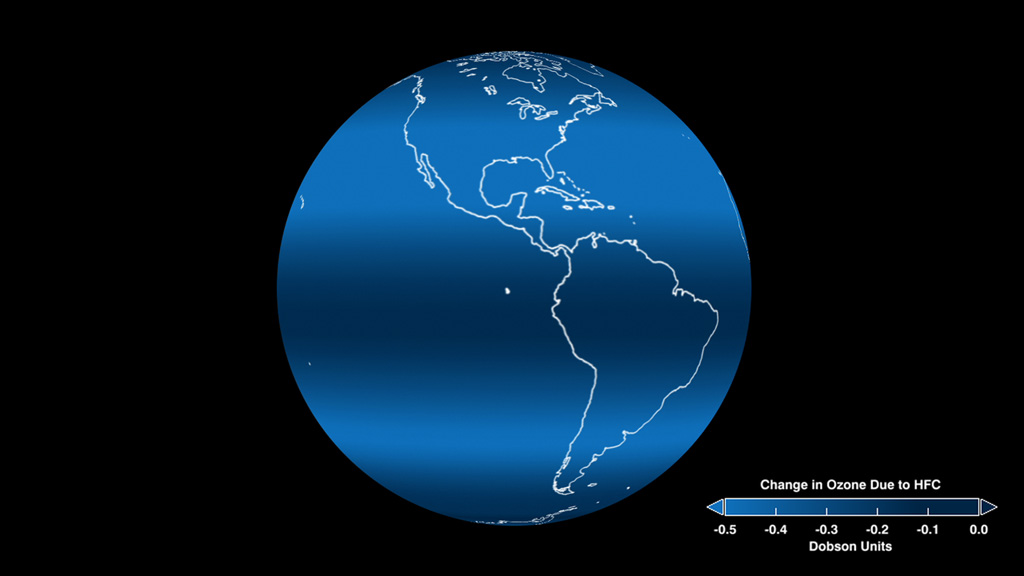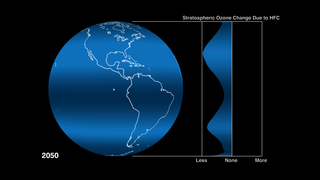Earth
ID: 12031

A class of widely used chemical coolants known as hydrofluorocarbons (HFC) contributes to ozone depletion by a small but measurable amount, countering a decades-old assumption, according to a new NASA study. Research in the 1990s showed that HFCs, which have replaced more powerful ozone-depleting chemical coolants in recent years, destroy only a negligible amount of ozone through direct chemical reactions. But the new study shows that HFCs deplete ozone indirectly through increased warming of the stratosphere, speeding up the chemical reactions that destroy ozone molecules, and they also decrease ozone levels in the tropics by accelerating the upward movement of ozone-poor air. Their impact is such that HFCs will cause a 0.035 percent decrease in ozone by 2050. While HFCs are only weak ozone-depleting substances, they are strong greenhouse gases. If production trends continue, projections show that, by 2050, the amount of global warming by all HFCs could be as large as 20 percent that of carbon dioxide. Watch the video to learn more.



Eyes On The Skies




Related Stories
For More Information
Story Credits
Lead Visualizer/Animator:
Horace Mitchell (NASA/GSFC)
Interviewee:
Margaret M. Hurwitz (Morgan State University)
Lead Producer:
Sophia Roberts (USRA)
Scientist:
Margaret M. Hurwitz (Morgan State University)
Videographers:
John Caldwell (Advocates in Manpower Management, Inc.)
Rob Andreoli (Advocates in Manpower Management, Inc.)
Lead Writer:
Samson K. Reiny (Wyle Information Systems)
Horace Mitchell (NASA/GSFC)
Interviewee:
Margaret M. Hurwitz (Morgan State University)
Lead Producer:
Sophia Roberts (USRA)
Scientist:
Margaret M. Hurwitz (Morgan State University)
Videographers:
John Caldwell (Advocates in Manpower Management, Inc.)
Rob Andreoli (Advocates in Manpower Management, Inc.)
Lead Writer:
Samson K. Reiny (Wyle Information Systems)
Please give credit for this item to:
NASA's Goddard Space Flight Center
NASA's Goddard Space Flight Center
Short URL to share this page:
https://svs.gsfc.nasa.gov/12031
Keywords:
SVS >> App
NASA Science >> Earth
https://svs.gsfc.nasa.gov/12031
Keywords:
SVS >> App
NASA Science >> Earth









